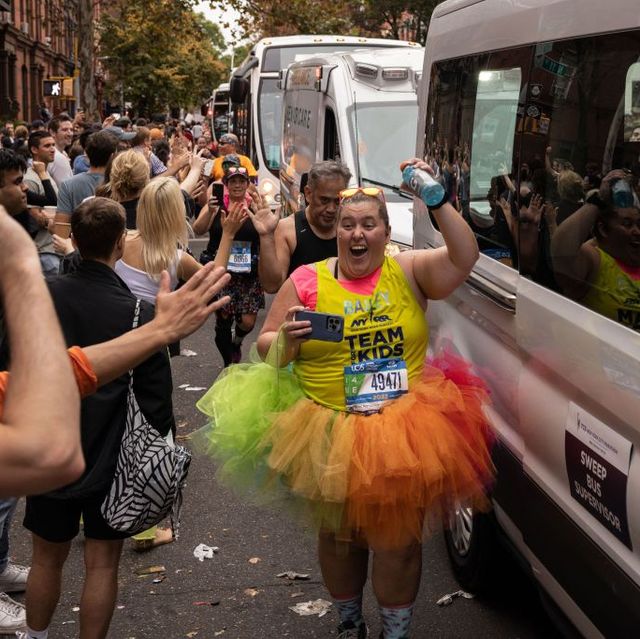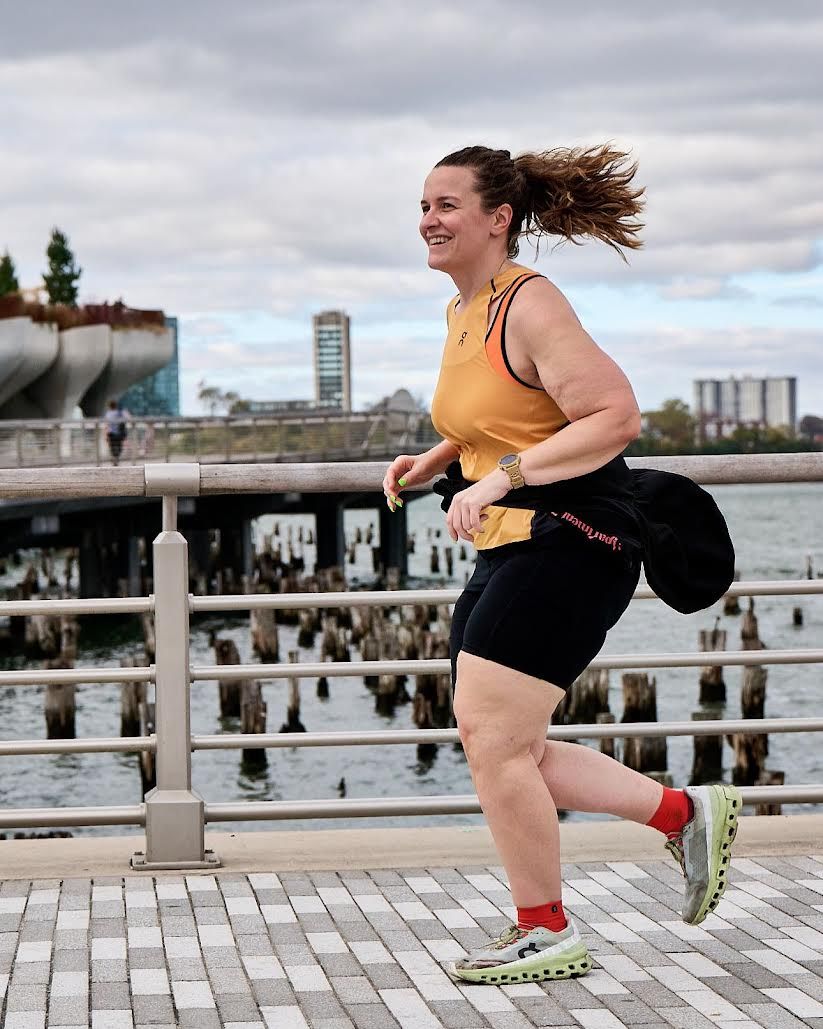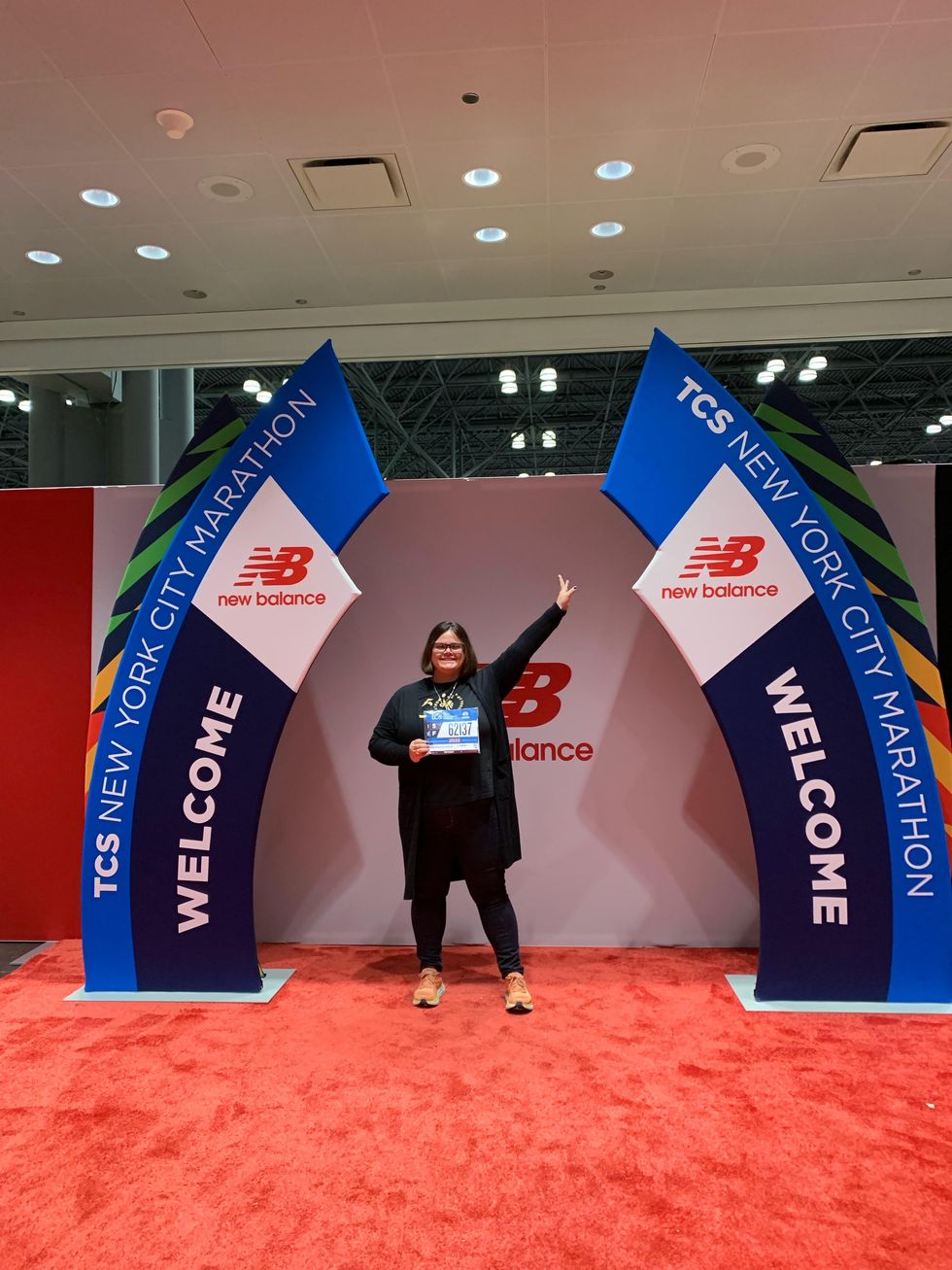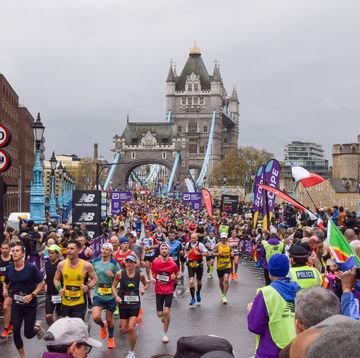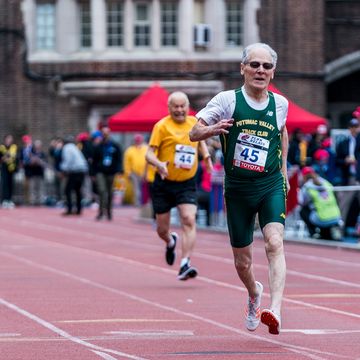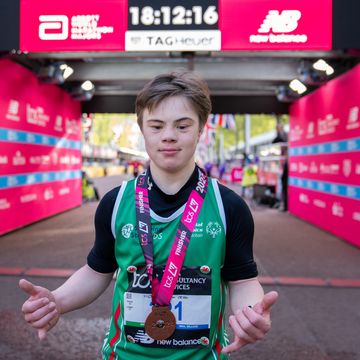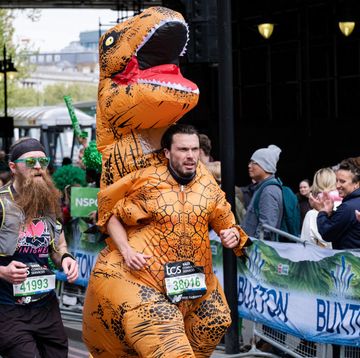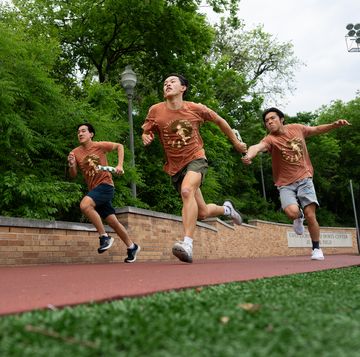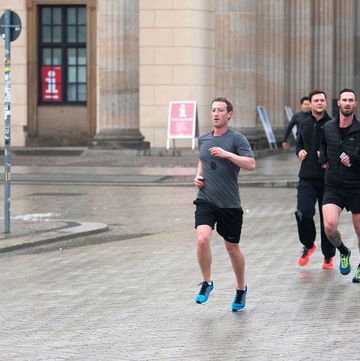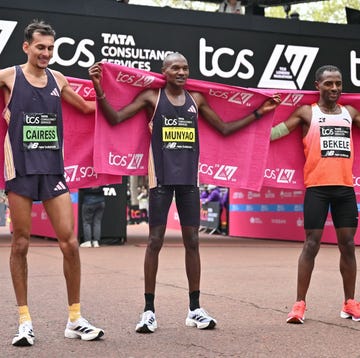As running catches on with a greater amount of people and paces, start lines at big races have ostensibly become more democratic spaces. This is another way of saying that marathons are getting slower.
At the 2022 New York City Marathon, the average time was 4:50:26, almost 23 minutes slower than the average time in 2000 (4:27:45 ), according to The Washington Post. And in 1990, just six out of 6,168 runners at the Chicago Marathon took longer than six hours to finish, a sharp contrast to the seven percent of 48,000 finishers this year who took 6+ hours to complete the race.
This is something to be celebrated—more people toeing the start line now who may not have felt welcomed or able to participate previously. But there’s a flipside to that coin. Back-of-the-pack runners face the same daunting challenges that every marathoner does, and then some.
Slower runners don’t have the same race conditions as their speedier peers. Back-of-the-packers often receive less crowd support, hydration and aid stations often run out of supplies or close down before they reach them, and sometimes the course can become a slippery hazard with piled up cups and trash left by other runners. Then there’s the “sweeper” vehicles that usually follow the slowest runners and pressure them into getting a ride to the finish line if their pace slows. Sometimes back-of-the-pack runners don’t even receive a finisher’s medal, nor an official time, if they don’t make the race’s cutoff time.
Observations from the back
Maria-Leena Kerr experienced some of these issues at her first marathon last year. By mile 14 of the New York City Marathon, her friends and family had no idea what was going on with her because her athlete tracking had been turned off. It was a “celebration beyond compare” when the 38-year-old mom made it to the finish line, but “Finding out that I didn’t get an official finish time but others that were slower did because they were in earlier waves made me pretty disappointed,” Kerr says.
Endurance athlete, inclusivity advocate, and seasoned marathoner Latoya Shauntay Snell says she thinks things are gradually changing for the better in the road running community for slower runners, but she sees many areas for improvement. Snell—who ran this year’s Chicago Marathon in 9 hours and 19 minutes—is not a stranger to being pulled off courses for falling behind, and she isn’t afraid of receiving a DNF if necessary. But she and other back-of-the-packers told Runner’s World that if runners are afforded the option to finish on the sidewalk, it seems appropriate to “at the very least, fulfill the most basic essentials like water on the course.” Snell says: “I know this is possible because I’ve seen other races like The Route 66 Marathon and the Little Rock Marathon make this happen.”
Every November since 2016, a group called Project Finish waits in Central Park until the very last runner finishes the New York City Marathon, to ensure that every athlete is celebrated and cheered for. Last year, they were out until 11:32 p.m. to encourage the very last runner, 75-year-old Rozanna Radakovich, as she completed her race in 15:10:18. It’s a labor of love, and there is always a small but mighty contingent of kind-hearted folks who show up and stay late to ensure that every finisher feels like a champion.
However, runners who take longer than 6 hours and 30 minutes to finish at New York must complete their race on sidewalks, because after the sweep buses pass, streets are reopened to traffic. There’s no medical or aid stations available to runners at that point either, and the finish line in Central Park closes at 11:30 p.m.
Back-of-the-pack runners deserve the same race experience and support as the fleet-footed amongst us. Ashley Dean, a fitness trainer, advocate, and self-described “slower runner” in New York, says that it’s a common misconception that people in the back don’t train, which is often untrue.
“I don’t believe anyone should run a marathon if they haven’t trained for it—whether they’re a 3-hour or 7-hour marathoner,” Dean says. She points out that participants are typically shelling out around $300 in race fees and thousands of dollars in training, gear, travel, and associated costs. “They all deserve the same tools on race day,” she says.
New attempts at support
Some large races, like the London Marathon, have been experimenting with programs to circumvent these issues. In 2020, the race organizers announced the mass race would start half an hour earlier than usual and invited participants who anticipated finishing slower than 7 hours and 45 minutes to start at the back of the second or third wave to give them more time to finish.
The marathon (which was canceled in 2020 due to the COVID-19 pandemic but resumed in 2021) provided a group of fifty “tailwalkers” to walk the entire course and operate as a mobile cheer squad for those at the back of the pack. The race also kept timing mats, event photographers, and drink stations in place until the last participants were done so that everyone received the same race experience.
In advance of the 2023 New York City Marathon, select runners including Snell and Kerr were invited to participate in a similar pilot program. On race day, Kerr will be lining up with Wave 1, which could potentially be a game changer, she says. The now three-time marathoner is glad that the earlier start time means she’ll have an official finisher time this year, but she’ll still be on the course for a long while.
She’ll probably face some of the same issues she encountered last year, just further on. “The whole idea of not wanting to bother the fast runners makes me nervous: if it’s not an official program, do they even know?” she wonders. “Will our presence make for an uncomfortable or perhaps frustrated situation for them?”
Overall, she says she’s still excited for the race, but if it’s not doable to keep it up long term, then volunteers should at least be kept out longer, and the back-of-the-pack runners should have access to the same amenities as other runners.
Thinking outside of the box
Snell suggests other ways to look out for slower runners on race day could include incentivizing volunteers to stay out later to cheer and support the back of the pack. “Race fees are already high and some runners are unable to participate due to the rising costs,” she says. “Offering an incentive like a discounted rate or gear to help back-of-the-pack runners will incentivize more people to help keep on these events. It may encourage a new wave of runners who are intimidated of signing up for races to consider becoming a distance runner for the long run.”
So long as there’s no ordinance preventing race organizers from doing so, she also suggests that roads be kept open a bit longer for runners, and to create mobile street teams positioned around every 5K. If funding is an issue, “perhaps networking with brands and companies to sponsor a mile or section of the course would be helpful for both racers and race directors,” she adds.
Lastly, while representation and inclusivity in the running world has come a long way over the past few years, there’s still so much work to be done. Creating panels and conversations at expos geared toward the back-of-the-pack runners would be “incredible,” Snell says. “I don’t think there’s enough stories put out there during panels and keynotes for athletes running over 6 hours.”
Fellow runners and spectators can help each other out, too. Dean encourages people who are planning to cheer to stay out a little longer to support beyond the 4-hour folks. “I promise you that the back-of-the-pack people are extremely grateful when you cheer for them,” she says. And if they want to provide extra support, she recommends bringing banana halves, orange peels, water, and vaseline to hand out.
Whether you’re running, cheering, or watching a live broadcast of a marathon, don’t forget the back of the pack. They deserve your support and respect, and if you’re reading this, you’re most likely a fellow runner, and you already know just how much a little encouragement can help on race day.
“At the end of the day, we’re all running the same distance,” Dean says.

Abby Carney is a writer and journalist in New York. A former D1 college runner and current amateur track athlete, she's written about culture and characters in running and outdoor sports for Runner's World, Like the Wind Magazine, The New York Times, and other outlets. She also writes about things that have nothing to do with running, and was previously the editor of a food magazine.
